#to George receiving dukedom
Explore tagged Tumblr posts
Text
…
#look I know this is a silly hill to die on but as a history nerd I feel I must die on it#George Villiers was not a prince or royalty and barely even nobility#his father died when George was young and they were on the edge of povert but his mum sent him to France to learn to be a courtier#he was also used as a pawn by some court members to oust the kings old favourite that they did not like#so he was essentially sponsored to stay in court and seduce the king#like I said I get it it’s probably not worth my breath#but I think it’s important to know George and his mother worked to pull their family out of obscurity and near poverty#to George receiving dukedom#ANYWAY.#mary & george#nicholas galitzine
18 notes
·
View notes
Text
US Weekly Spring 2017 (Omit's employer)
"What Meghan Wants, Meghan MANIFESTS"
Soho House "consultant" Markus Anderson introduced MM & Harry at Soho House in June
April 7th was her "final" website blog post as she expects a fall 2017 engagement to Harry
Edward Lane Fox & Jason Knauf are on call to answer her queries "having access to Harry's aides has been a godsend"
"She's very much been accepted into the family. They are so happy to see Harry happy."
Wills & Kate provide an empathetic ear & "tips on managing life in the royal spotlight..." they are "the only two people in the world who understand her exact situation"
She will attend Tornoto Invictus with Harry: "Come late September, the twosome will make their very public debut in the Canadian city. Meghan will be by his side. It's a safe, controlled situation and there's a legitimate reason for Meghan to be there in a supportive role. It just makes sense."
Like Wills, Sparry will receive a Dukedom upon marriage. His bride will be Duchess of Sussex and "any kids will be dubbed lords or ladies."
Invite me to Pippa's wedding! "Meghan Markle has reportedly asked for time off from filming Suits"
Clapbacks at the Palace Aides here & during Mockumentary
MEgain showed up "on time" at a Toronto flower mart wearing an M H necklace to meet British paparazzi Jasel. He later reported that she posed and orchestrated the entire "photo shoot." Palace aides were angry, and reported to Sparry that "she's enjoying it."
"Last fall she had reporters capturing her every move...she felt like smiling & being pleasant...unfortunately for her, people interpreted that as her loving the attention. Now she keeps a neutral expression when snapped on the streets of London or heading to the gym in Toronto."
Envious of Kate. More Clapbacks via Oprah & Mockumentary
Megs is still angry the palace refused to provide her with pre-engagement "princess training." She coldly told NOprah: "I don't know what other people got but that wasn't something that was offered to me."
"YEARS BEFORE William presented commoner Kate with the 18-carat sapphire-and-diamond ring that belonged to his late mother, Princess Diana, she was shown video of Di elegantly exiting a car to a throng of eager photographers, for example, explains a royal insider, "so she would know how to deal with it."





Markle's no rain, no mud (just paparazzi) "rainy-day look"

Poor Kate was crying 😭
I imagine Wills, Kate nor their security detail felt happy that Jesal saw Catherine in painful labor (with Prince George) enter the back of the hospital. Perhaps today that moment can be celebrated through a historical lens because unlike others, a stranger was actually a hospital eye witness to the Duchess of Cambridge in severe physical distress. 👑




youtube
#Sparry's girlfriend#paparazzi#Meghan Markle is the leaker#Toronto Invictus#CopyKate#Jesal Parshotam#meghan markle is a liar#Wills & Kate#markus anderson#soho house#princess training#kate middleton in labor with prince george#pippa & james matthews wedding#Prince George Due Date#Jesal#meghan markle is a bully#grifters gonna grift#Toronto#us weekly#2017#royal mentors#The Duke and Duchess of Cambridge#kensington palace#merching#we both know i'm going to be your boss#Suits#omit scabbies#prince harry#party prince#mockumentary clapbacks
15 notes
·
View notes
Text

Woodstock Palace announced this morning that Her Majesty's eldest grandson, Prince Richard, has been created “The Duke of Harrington” in a small ceremony held in the palace's throne room. Along with the title, the Prince was also knighted as a Peer of the Realm.
A Royal Duke is a duke who is a member of the Wessex Royal Family and entitled to the style of "His Royal Highness" or "His Highness" as the child, grandchild, or great-grandchild of the Sovereign. Royal Dukedoms are the highest titles in the peerage of Wessex.
The ceremony, attended by senior members of the royal family and invited guests including Prince Richard's mother Margaret, the former Crown Princess, is a rarity in Wessex. The the title of "Duke" is strictly reserved for members of the royal family, with members of the nobility taking on lower titles such as Earl, Baron, Banneret, or Lord and in rarer instances Marquees and Viscount.
Traditionally, male members of the royal family are awarded a dukedom as a teenager and the title is inherited down that individual's line, but cease to be 'royal' once they pass beyond the great-grandsons of a monarch.
The title of "Duke of Harrington" is one steeped in historical significance. With three previous royal holders ascending to the throne as King themselves. The last holder of the title was King George the Great of Wessex who, much like Richard, was created Duke of Harrington by his grandmother, Queen Anne I of Wessex in 1778.
Though just a teenager, once Richard reaches the age of maturity, his role as Royal Duke will grant him many privileges and rights, though most are no longer formally practiced.
As a royal duke Richard will receive an annual allowance from the Sovereign Purse (privy list) in exchange for fulfilling royal duties. He also reserves the right to sit on the Peers Bench in the National Council, though no member of the Royal Family has since the reign of William III in 1905, done by Prince William, The Duke of Worcester.
With some of the nations most formidable Kings as pervious holders, including the likes of Henry II and Edward IV, Richard has much to do to impress his esteemed ancestors. But undoubtedly they would graciously welcome Richard into their exclusive club.












(Pictured from Left to Right) : Prince Albert, The Duke of Uxbridge ; The Prince George, The Duke of Chelsea ; The Prince Richard, The Duke of Harrington ; Crown Prince William of Wessex, The Duke of Dorset ; Charles II, The Grand Duke of Cornwall (also holds the royal dukedom of Westminster) ; Queen Anne II of Wessex seated.

His Royal Highness The Prince Richard William Edward Paul of Wessex, The Duke of Harrington, The Serene Count of Chester
#sims 4 royal simblr#sims 4 royalty#sims royal legacy#sims 4 royal family#sims royal#sims legacy#sims royal family
7 notes
·
View notes
Note
How far down can someone in a family use a Prince/Princess title? For example, if this person was the great grandchild of a younger son of a king, would they still be a Prince/princess or would they have a noble title if his great grand father received a dukedom and passed it down that line, ie “Lord/lady blank of blank”
Only the children of heir and male children of the monarch carry the title Prince/Princess. The great grandchildren won't, they will carry the titles that come from any secondary titles their parent has. For example Prince Michael of Kent is the son of George, Duke of Kent. His daughter (the grandchild of George) is Lady Gabriella as befits the daughter of a Duke.
14 notes
·
View notes
Text


𝙸𝙽𝚃𝚁𝙾𝙳𝚄𝙲𝙸𝙽𝙶 ... ᴀᴜʀᴇʟɪᴀ ᴜɴᴅᴇʀᴡᴏᴏᴅ
( OLIVIA COOKE + WOMAN + SHE / HER. ) dearest reader , i am ever so delighted to introduce AURELIA UNDERWOOD , the twenty nine year old duchess , known among the ton as adaptive + open minded but their foes would certainly tell you that they are more closed off + mysterious . perhaps that is why many seem to think they had something to do with the ongoings around the ton , but here they are anyway ! ( lo , 27 , she + her , gmt + 10 , n/a. )
𝙨𝙩𝙖𝙩𝙞𝙨𝙩𝙞𝙘𝙨
full name : aurelia underwood . nickname/s : lia . pronouns : she / her . age : twenty nine . star sign : aries . family : nathaniel george ( father ), rosalie george nee hanson ( mother ), franklin underwood ( deceased husband ) & adelia underwood ( half sister ). home : england .
𝙗𝙖𝙘𝙠𝙜𝙧𝙤𝙪𝙣𝙙
aurelia was born the eldest and only child to nathaniel and rosalie george. she had been born purely out of obligation and duty. there was no love between the two of them but there was an extremely strong friendship and partnership.
growing up, aurelia was no stranger to all the finer things in life. she received the best of the best and that included education. her mother invested majority of her time ensuring that she had all the skills and tools to be able to marry someone of a higher station.
even from a young age, she had knew her role in this world and was aware of what she must do to play such a role. aurelia had always been smart and as clever as a fox.
when her half sister was born, rosalie refused to acknowledge their existence and refused to allow for her husband, nathaniel, to do the same. despite the love she had for her parents, aurelia could not find it in herself to do the same. hence, from her half sister's birth, she had committed herself to the role of caretaker, sister, mother and friend. she swore an oath to the newborn that she would always care and look after her.
upon her first season out in society, it did not take aurelia long to find herself a duke. she held no love for the man but he represented everything she needed and wanted; financial independence from her family and a proper station befitting her.
after leaving her familial home, she had her half sister move to the estate with her and franklin bestowed his last name upon her at aurelia's request. she finally had her ducks in a row.
at the age of twenty five, franklin died suddenly from a horse riding incident. aurelia grieved the loss of a friend but quickly made sure everything was aligned for her to maintain the dukedom as the duchess and to ensure no one could take it away from her.
now that she is a widowed duchess, aurelia has no plans of ever re-marrying. she is enjoying the freedoms she has been given as well as not having to answer to anyone she does not wish to. aurelia prefers her freedom and control over love. she is able to maintain and experience causal relationships with whoever she pleases, sponsors those she wishes to and provide her sister with the life she deserves.
1 note
·
View note
Text
The children are getting an update on the website.
PEOPLE understand that the palace will update the website to reflect titles in due course; currently, they are styled as "Master Archie Mountbatten-Windsor" and "Miss Lilibet Mountbatten-Windsor."
The titles are in line with the precedent established by King George V after he issued a Letters Patent in 1917, which conferred the title of prince or princess on male-line grandchildren of the sovereign.
Upon the death of Queen Elizabeth in September, Harry's father became King Charles, and as grandchildren of the monarch, 3-year-old Archie and 1-year-old Lili were afforded the titles of prince and princess.
Prince Harry, 38, and Meghan, 41, referred to their titles for the first time while confirming the news of their christening in California.
Prince Archie and Princess Lilibet did not receive the titles when they were born because they were great-grandchildren of the monarch.
When Prince Harry and Meghan were married in May 2018, Queen Elizabeth gave them the titles of Duke and Duchess of Sussex and entitled them to the "courtesy title" of Earl of Dumbarton upon his birth, but the couple did not give him a courtesy title at that timeline so that he could be given the secondary Sussex title before inheriting the dukedom.
PEOPLE exclusively confirm that the Duke and Duchess of Sussex held a christening for their 21-month-old daughter last Friday in a small and intimate ceremony at their home in Montecito, California.
An insider tells PEOPLE there were between 20 and 30 guests at the gathering, including the mother, Doria Ragland, the godfather, Tyler Perry, and an unnamed godmother source, and they extended an invite to King Charles, Queen Camilla, Prince William, and Kate Middleton, but they were not in attendance.
Following the ceremony, attendees were treated to an afternoon of food and dancing, with Archie enjoying a dance with his little sister!
Perry was spotted arriving in Montecito last week ahead of the christening and flew in for the ceremony from his home in Atlanta with a 10-person gospel choir that sang "Oh Happy Day" and "This Little Light of Mine, a song that was played at the wedding.
In December, Tyler Perry revealed that he is the godfather to Lilibet, who was born on June 4, 2021, in the Santa Barbara, California, episode of the Netflix docuseries Harry and Meghan said Harry and Meghan "were pretty serious about the phone" when they called to ask when usually their chats are more lighthearted.
1 note
·
View note
Text
Anonymous asked: I have always wondered why Winston Churchill never received a proper noble title by the time he died. Ex-Prime Ministers such as Harold Macmillan was made an earl and Margaret Thatcher was made a baroness so why wasn’t Churchill recognised for his heroic leadership and political service during the Second World War?
As you might imagine the answer isn’t as straight forward as you might suppose. In truth Sir Winston Churchill was recognised for shepherding the country and the British Empire through the darkest hours of war. His place in history is assured and for someone who always had an eye on the arc of history Churchill, I imagine, died happily enough knowing his achievements were enshrined in the nation’s long history.
Churchill was offered the title of the Duke of Dover as well as Knight of the Garter by George VI, a monarch who at the outset preferred Chamberlain to Churchill but in time came to deeply appreciate Churchill’s qualities as a war leader. Churchill, much to the King’s surprise, declined the offer of a dukedom and also membership of the Order of the Garter, saying that it would be inappropriate given that the electorate had just given him the Order of the Boot - he had just lost the 1945 General Election to Labour’s Clement Attlee.
Later in 1955, after retiring as prime minister, Churchill was again offered elevation to the peerage in the rank of duke by Queen Elizabeth II as the Duke of London (apparently). He again declined. But Churchill did accept in 1953 from Queen Elizabeth II the Order of the Garter. The Queen appointed him the 912th Knight of the Garter on April 24, 1953. He had already been made a Companion of Honour and a member of the Order of Merit. The Order of the Garter is the most senior and the oldest British Order of Chivalry and was founded by Edward III in 1348. The Order, consisting of the King and twenty-five knights, honours those who have held public office, who have contributed in a particular way to national life or who have served the Sovereign personally.
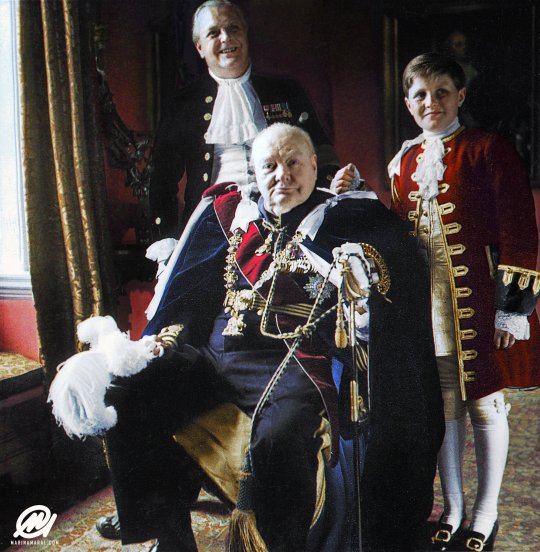
So why did he turn down being a duke because after all past prime ministers retiring from the House of Commons were offered earldoms and other titled baubles?
A few reasons have been put forward by historians and his biographers. It isn’t because Churchill didn’t think it was a special honour, because he recognised its importance. His reasons seemed more practical.
For one thing being offered a dukedom meant also the expectation that you lived the lifestyle of a duke. It goes without saying the lifestyle of a duke, back then, was an expensive undertaking. In the 1940s and 1950s a duke was expected to be rich, to have at least two stately homes plus a large house in London, and to live on his estates and play a part in local affairs. Being a JP, raising funds for local charities, showing up for school openings and the like. It’s all very Downton Abbey-esque. Certainly the social expectations pre-1945 of the British aristocracy well established.
My grandfather was told by his grandfather of how his childhood friend from school, Lord Lansdowne, a great-grandson of Prime Minister Lord Shelburne and a marquess with two stately homes, was offered a dukedom after being viceroy of India; but Henry Petty-Fitzmaurice, the 5th Marquess of Landsdowne, refused because his income was not large enough. In fact being a duke was no fun at all, despite what people then and especially now think.
At the outset of the 1870s, the British aristocracy could rightly consider themselves the most fortunate people on earth: they held the lion's share of land, wealth, and power in the world's greatest empire. By the end of the 1930s they had lost not only a generation of sons in the First World War, but also much of their prosperity, prestige, and political significance. This loss was accentuated in slow motion speed into the 1950s and beyond. Other countries such as Russia, Germany or Austria can pinpoint a single event to the demise of their landed nobility (revolution or war), but in Britain it has been quintessentially different. Britain was unique in that the displacement of the British aristocracy occurred without revolutionary overthrow. It was in fact a bloodless revolution.

The assembled Dukes in 2010: (from left to right) 1. James Graham, 8th Duke of Montrose; 2. David Manners, 11th Duke of Rutland; 3. John Seymour, 19th Duke of Somerset; 4. Ralph Percy, 12th Duke of Northumberland; 5. Andrew Russell, 15th Duke of Bedford; 6. Edward Fizalan-Howard, 18th Duke of Norfolk; 7. Torquhil Campbell, 18th Duke of Argyll; 8. Maurice FitzGerald, 9th Duke of Leinster; 9. Murray Beauclerk, 14th Duke of St Albans; 10. Arthur Wellesey, 8th Duke of Wellington.
The sobering scholarship of the Cambridge historian, Sir David Cannadine has pointed to mainly three principal reasons for the decline of the aristocracy in British public life. Firstly, land reform (especially in Ireland). The unearned income of the landlord became increasingly the target, especially in Ireland, of new political movements. and the huge sales of land in the 1920s to meet taxes and death duties. - crippled the aristocracy in Britain. This was combined with a lengthy agricultural depression that began at roughly the same time. Indeed it began when the price of wheat dropped during the 1880s. The gradual increase of tonnage being shipped because of steam, allowed large quantiles of arable produce to enter Europe from the US and elsewhere, reducing prices. The British refused to slam tariffs on imports, because the new electorate enfranchised in 1885 were townies and liked the lower food prices in the shops.

Secondly, the mass killings in France and Belgium in World War One that claimed a generation of British lives of young men. The aristocracy volunteered for the British armed forces in droves because they were dispirited by their losing social and economic struggle at home, and preferred to fight a battle they thought they could win. In actuality, the aristocratic ethos carried with it many obligations, one of which was that an aristocrat not shirk from fighting his country's battles. The deeply ingrained sense of honour nurtured by the British upper class was one of its most admirable characteristics, and the sons (and sometimes fathers) of the upper class who headed for the front lines simply were acting in accordance with their sense of honour. The result was a casualty rate far in excess of any other social group in the country.
Thirdly, hand in hand with all this was the whirlwinds of social change taking place such as the rise of the middle class into the professions seen as the traditional strongholds of the aristocracy. The professionalisation of traditional occupations such as the civil service, church, military, politics, or law meant the educated middle classes could compete, and frequently excel, an aristocracy now resting on past laurels. The aristocracy couldn’t complain as they just grew fat and lazy whilst the more risk taking and ambitious middle classes had a greater hunger to succeed. More damning was the fact that the aristocracy lost touch with their societal roots of duty and obligation and were rightly found to not represent the populace with the extension of the electoral franchise.
These days dukes have adapted to the winds of change. Some have followed Dukes of Bedford in 1945 and later the infamous Marquess of Bath to open their stately homes, Woburn Abbey and Longleat respectively, as theme parks cum tourist attractions. They were much criticised at the time. Alexander Montagu, 10th Duke of Manchester, sold off his two stately homes in the early 1950s and lost much of his status doing so - in the 1600s, his heir might have been prevented from assuming his title and seat in the Lords because of insufficient wealth. This happened to Roger Stafford, heir of that medieval Stafford family, over whom Henry Montagu, the 1st Duke of Manchester, presided a royal commission to see if poverty disqualified his claim to the barony of Stafford.
As interesting as this discussion is, I find myself straying from the question at hand.

Back to Churchill. I am of the view that the main reason why Churchill turned down a dukedom was that he knew that accepting a peerage might have cut short a renewed career in the Commons for his son Randolph and in due course might also prevent one for his grandson Winston. At the time there was no procedure for disclaiming a title. Indeed the procedure was first established only later by the Peerage Act 1963. As things stood then in Churchill’s time, upon inheriting a peerage, either Randolph or Winston would immediately be unseated from the House of Commons.
In the event, Randolph never sat in Parliament after losing his only seat there in 1945 and indeed was to die only three years after his father, so the dukedom would have had no effect on his career. Randolph's oldest son Winston did serve in the Commons from 1970 until 1997, but by that time provision existed for disclaiming a hereditary peerage, as long-serving far left Labour MP Tony Benn - born Anthony Wedgwood Benn, son of Labour Party peer, Viscount Stansgate - had done in 1963 upon the passing of the Peerage Act.
It also can be argued that Churchill had no need of a dukedom when he was already an aristocrat - or at least born into one. His father was Lord Randolph Churchill and direct descendant, of the famed 1st Duke of Marlborough. Winston was born in 1874 at his family’s ancestral home of Blenheim Palace in Oxfordshire. Whilst Churchill was an aristocrat, he didn’t really have much time for them, nor was he particularly enamoured by that class. Why that was the case, I would be happy to address in a future post. But for it’s enough to say that Sir Winston S. Churchill remained a commoner until he died.

Although it was considered usual for prime ministers to be offered earldoms, recent prime ministers have declined to accept peerages - the last to do so was Margaret Thatcher, who was made a baroness. Interestingly enough, Harold Macmillan was offered an Earldom immediately when he retired but rejected it, in retirement he later made many political interventions and criticised his successors, when Thatcher became Prime Minister he requested a peerage and was given the title Earl of Stockton, he used his new seat in the Lords to criticise Thatcher's handling of the coal miners' strike, so he pretty much used his new peerage as a way to have a platform from which to oppose Thatcher.
But with fewer peerages being created the political climate has changed where it’s rare that an outgoing prime minister is even offered any kind of title, let alone a peerage. These days a lot of that is down the the public image of the outgoing prime minister and it seems a lot of water has to pass under the bridge before someone can be considered for any kind of honour. John Major, Tony Blair, Gordon Brown, David Cameron, Theresa May, and even Boris Johnson (let’s not even talk about Liz Truss) have to wait for the political climate to change any kind of recognition.

John Major turned down a peerage (or so it was reported) but accepted a knighthood in 2005 from the Queen when he was made Knight Companion of the Most Noble Order of the Garter, the oldest and most senior British order of chivalry. Tony Blair, who left Downing Street more than 15 years ago, recently followed in the footsteps of Major in 2021 when he too was knighted and made a Knight Companion of the Most Noble Order of the Garter.
Appointments to the Garter are in the Queen’s gift and made without prime ministerial advice. They are for life unless a knight or lady companion offends against certain “points of reproach”.

Founded in 1348 by Edward III, the garter is awarded by the sovereign for outstanding public service and achievement. It is said to have been inspired by events at a ball in northern France, attended by the king and Joan, Countess of Salisbury. The countess is believed to have dropped her garter, causing laughter and some embarrassment. The king, however, picked it up and wore it on his own leg, uttering the phrase “Honi soit qui mal y pense” – “Shame on him who thinks this evil” - now the order’s motto. The order’s emblem is a blue ribbon or garter worn by men below the left knee and by women on the left arm. There are now 21 non-royal companions in the order out of a maximum of 24.
Gordon Brown and David Cameron will have to wait their turn. Heaven knows what will happen when Liz Truss’ time comes. Perhaps we can have some piecemeal reform whereby by all means bestow a title on said politician but the public decides on the place name.
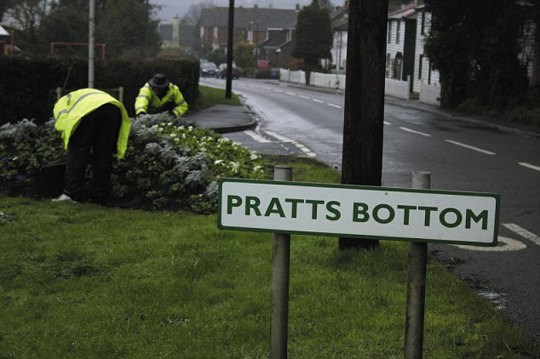

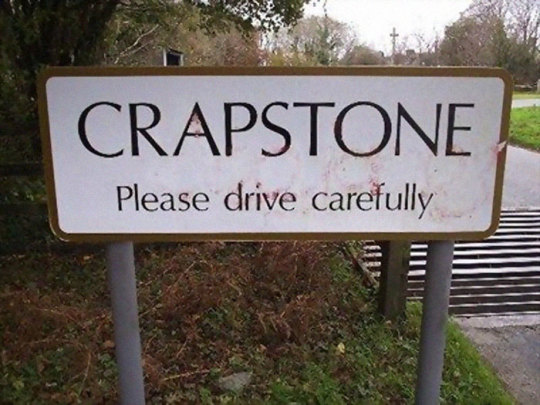


I look forward to hearing more from Lord Cameron of Pratt Bottom, Lord Brown of Great Snoring, Lady May of Crapstone, Lord Johnson of Bonks Hill, and Lady Truss of Twatt on great issues of the day in our public discourse.
Thanks for your question.
#question#ask#peerage#winston churchill#aristocracy#house of commons#knighthood#house of lords#politics#queen#monarchy#order of the garter#nobility#prime minister
57 notes
·
View notes
Note
He is still technically Prince Henry of Wales. - No he is not. The 'of Wales' was a courtesy title as a son 'of Wales' title held by his father. Just like Prince Michael 'of Kent' or Prince George 'of Cambridge'. The minute he was granted a dukedom in his own right, he stopped being 'of Wales'. He is now Prince Henry The Duke of Sussex. Actually, as the Dukedom is considered higher status in UK, he is just plain The Duke of Sussex just like The Duke of Kent and The Duke of Gloucester instead 1/2
2/2 of Prince Edward The Duke of Kent or Prince Richard The Duke of Gloucester. Same applies to William who should always be The Duke of Cambridge now NOT Prince William The Duke of Cambridge. Prince Michael of Kent never received any title in his own right and therefore continues to use his father's courtesy 'of Kent'. If Prince Richard's elder brother William lived to inherit the Gloucester Dukedom, he would have been Prince Richard 'of Gloucester' for rest of his life like Michael. When M&H
3/3 insist on using the 'of Wales' and Meghan referring to herself as 'Princess Meghan of Wales', they are not just demoting themselves, they are repudiating their higher status Sussex, Dumbarton, Kilkeel titles. It would be like The Queen insisting that she was Princess Elizabeth instead of HM The Queen
______
Interesting.
While I think Meghan knows that the Duke/Duchess title is a higher rank than that of Princess Henry, Meghan's focus is on the Wales part because of Diana. Also, because eventually that PoW title will be Catherine's and it is higher than a Duchess and that is what bother's Meghan.
Kate being a Princess while Meghan is a Duchess. The semantics don't matter to Meghan. It's all about perception because many people do not know the workings of titles so many believe Princess if above Duchess...
If you see what I mean.
68 notes
·
View notes
Note
Regarding giving the son of the Prince of Wales the Cambridge Dukedom, George is not old enough to receive a Dukedom and he won't be for many years. By the time he might get married (let's say 25-30 years old, so 15-20 years from now) , Charles if still alive would be around 95 (not having much time left, let's be honest) and William 60. Also, G would get many other titles when W takes the throne so does he (or any first son of the Prince of Wales need more titles)? The York Dukedom and Princess Royal title is meant to elevate a little the other children of the Monarch who are in a already lower position than the future PoW.
Thanks!
20 notes
·
View notes
Photo
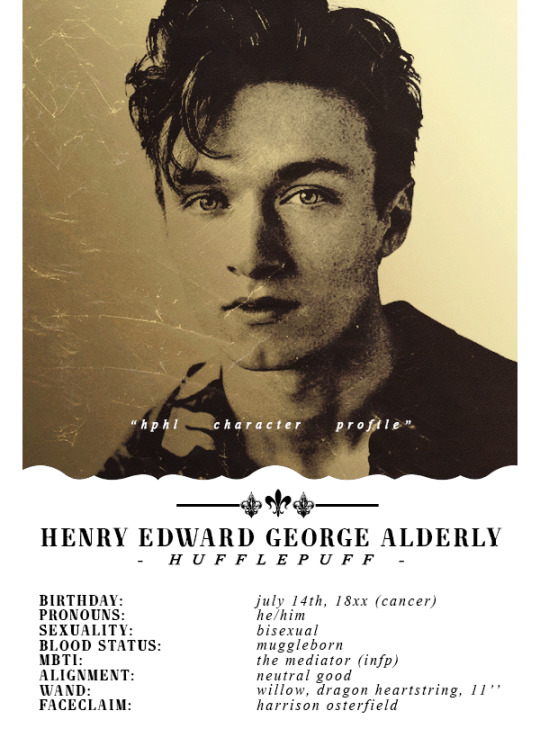
► basics;
Full Name: Henry Edward George of Alderly (uses Alderly as a surname at Hogwarts)
Birthday: July 14th, 18xx, (cancer)
Pronouns: he/him
Sexual Orientation: bisexual
Hogwarts House: Hufflepuff
Blood Status: Muggleborn
Nationality: English
cw: discussions of mental illness, alcoholism, child neglect, canon typical awfulness of being part of the royal family

► magical info;
Wand: Willow, 11 inches, dragon heartsrting, slightly yielding
Willow is an uncommon wand wood with healing power, and I have noted that the ideal owner for a willow wand often has some (usually unwarranted) insecurity, however well they may try and hide it. While many confident customers insist on trying a willow wand (attracted by their handsome appearance and well-founded reputation for enabling advanced, non-verbal magic) my willow wands have consistently selected those of greatest potential, rather than those who feel they have little to learn. It has always been a proverb in my family that he who has furthest to travel will go fastest with willow.
Patronus: Swift
Although swifts can be perceived as flighty, that’s only because they have a strong sense of determination and a drive to accomplish things as quickly as possible, which makes them go from one endeavor to the next very quickly. They are hopeful, positive, and energetic and are drawn to live and work in large communities, where they find inspiration from the high spirits of others.
Patronus Memory: Receiving his Hogwarts letter
Boggart: His friends turning on him and abandoning him.
Amortentia: (What do they smell like?): tba
Specialized/Favourite Spells: Healing spells
Class Proficiencies:
Astronomy: O
Charms: E
DADA: A
Herbology: E
History of Magic: O
Potions: A
Transfiguration: E
Electives:
Care of Magical Creatures: E
Muggle Studies: O
► background;
Place of Birth: Alderly Hall, Alderly, England
Home: Alderly Hall, Alderly, England
Pre-Hogwarts:
On an alternate timeline Princess Augusta, Queen Victoria’s aunt, marries Edward, the fictional duke of the fictional Alderly. They have several children together, and their eldest son, prince Thomas, the new duke of Alderly marries an equally fictional German princess Louise Alexandra. Together they have one son, Henry. He turns out to be a difficult child, suffering from bursts of melancholia and mania. (He’s bipolar but the word doesn’t exist in the Victorian era.)
To add to it all, he begins to show signs of magical ability at an early age, which further ostracizes him from his parents and peers. He grows up a pretty lonely child, having mostly his nannies as playmates. When he gets his Hogwarts admission letter, his parents hide it from everyone around them. It’s easy enough to pass his magical education off as an elite boarding school in mainland Europe, or a bout in a mental asylum due to his health. Everyone’s just happy he’s not in the picture, tarnishing the royal family’s reputation. He is, after all, first cousin once removed to Queen Victoria.
► physical;
Faceclaim: Cory Gruter-Andrew, Harrison Osterfield, JJ Feild
Eye Color: Blue-green
Hair Color: Brown
Height: 5′10 (178cm)
Tattoos, Birthmarks, Scars, etc:
Young!Henry FC: Cory Grüter-Andrew
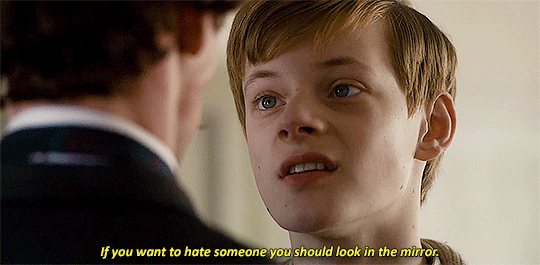
Henry!Henry FC: Harrison Osterfield

Older!Henry FC: JJ Feild

Oldest!Henry FC: Staffan Göthe
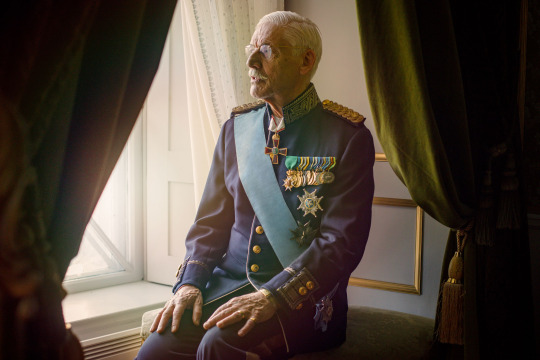
► relatives;
Father: Prince Thomas, Duke of Alderly
The eldest son of Princess Augusta and Duke Edward, he inherits the dukedom of Alderly at twenty-one years old, before the birth of his only child, Henry. Thomas is a muggle and quite content living his aristocratic life at Alderly Hall. He’s not an especially caring father, following the custom of the era in which nannies take care of the children while he tends to the matters of his estate. He does care for his son and wants him to have a good life, perhaps just... somewhere not quite so close-by... especially with all the weird magic and mental illness going on...
FC: Tobias Menzies

Mother: Princess Louise Alexandra of Hesse and by Rhine, Duchess of Alderly
Louise is a glamorous muggle woman, famous for her high society gatherings at Alderly Hall. She married the newly donned duke on her eighteenth birthday, when he was twenty-one. She’s not mean-spirited but she’s aloof, a bit of an alcoholic, and definitely not interested in being a mother. As a young child, Henry tries his best to get his mother’s attention, and delights in every single moment spent with her. The older he gets, the more distance there seems to be between the duchess and her son.
FC: Rebecca Ferguson

► relationships;
Allegiances: Hufflepuff house, The Alderly Family
Best friend: tba
Other close canon friends: tba
MC Friends:
Primrose Gray by @endlessly-cursed
Prim is Henry’s oldest friend and one of his dearest confidants. Prim helped Henry feel more comfortable at social events and the two grew closer once they both received their Hogwarts letters. At school, they moved in the same circles and shared a lot of friends. Primrose knew all of Henry’s secrets and while they sometimes disagreed and argued, they had deep love and respect for each other. As adults, they kept in touch and often visited each other, remaining good friends. Their families were close as well, as Henry’s wife Cora was one of Prim’s dearest friends.
FC: Anna Popplewell

Jesse Seymour by @endlessly-cursed
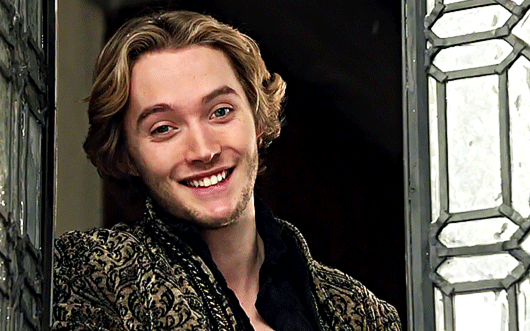
Simon Battersea by @unfortunate-arrow

Lillian Miller by @camillejeaneshphm

Abraham Alden by @cursed-herbalist

Nadia Erbland by @gcldensnitch

Benji Gerhardt by @cursebreakerfarrier

Galen Stagg by @cursebreakerfarrier
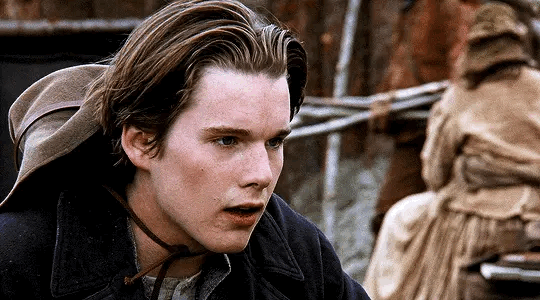
Teddy Ellison by @cursebreakerfarrier
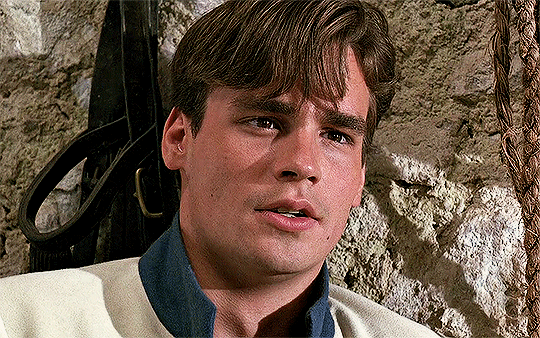
Basil Keaton by @cursebreakerfarrier
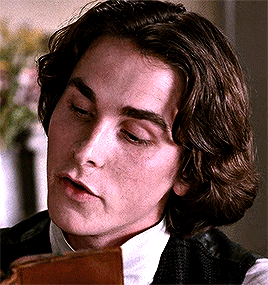
Lyle Astor by @cursebreakerfarrier
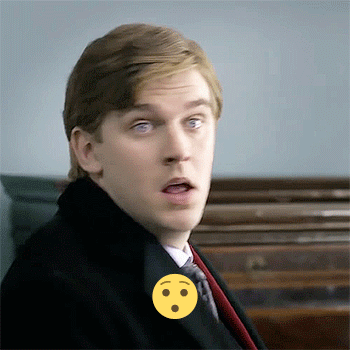
Persephone Gould @cursebreakerfarrier
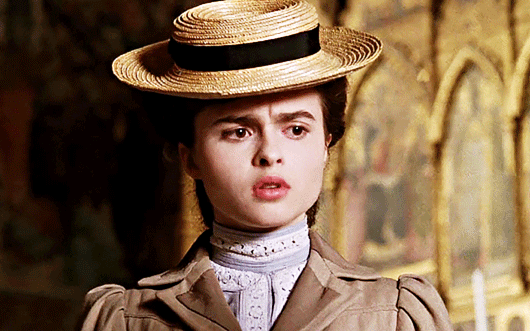
Fred Graham by @hphmmatthewluther
Atticus Doherty by @hphmmatthewluther
Dorm mates (2/5):
Jesse Seymour by @endlessly-cursed
Simon Battersea by @unfortunate-arrow
Love Interest:
Elyan Goldcrest by @potionboy3
Henry meets Elian (as he goes by I and not Y at that point) at Hogwarts during his fifth year.They started a secret relationship while still in school and it continued through the years. They fell deeply in love even with the inevitability of Henry’s death hovering over them from the start. During the years, Elian would sometimes leave for longer periods of time, but would always return. Elian stayed in his life even after he got married. During World War II, the two clashed over Henry’s responsibilities and Elian’s disinterest in muggle affairs. Elian left to fight in the war after a particularly bad argument but they managed to reconcile after the war. They always had their ups and downs but loved each other despite everything.
It’s said that Henry brought out the best in Elian, though the history books won’t mention anything about their relationship.
FC: Gijs Blom

Future spouse:
Lady Cora Hastings
lore to be added!
FC: Bella Heathcote

Pets: Though not technically his, back home at Alderly he has a favourite horse by the name of Bucephalus.
Rivals: (hmu if you’re interested in a rivarly relationship!)
Enemies: tba
► personality;
Henry is smart, eager to learn, and a little bit socially awkward when put in situations he hasn’t been rigorously trained for. He’s kind, has a friendly disposition and tries his best to make new friends despite having a lonely childhood. He’s not very outgoing but if in a group, he often wants to make sure every around him feels like they’re being heard. He’s not particularly good at any sports, though he’s gonna give it his best shot if put to the spot. He’s decent with horses and enjoys riding, though not racing.
Henry is bipolar. He occasionally has episodes during which he’s incredibly depressed and struggles to get out of bed in the morning, much less get any work done. Other times though, he goes through periods of incredible bursts of energy that can manifest in even foolhardy ideas, reckless spending (he’s especially fond of gambling while in the manic state), and extremely bad communication with those around him.
Note on the terms: Outside of Henry’s story’s point of view, I’ll be using modern terminology to refer to his illness but within the story I’ll refer to it mostly as melancholia and mania or some other time appropriate term.
► misc;
Hobbies: Reading, playing the piano, riding
Extracurriculars: n/a
Quidditch: n/a
Favourite Subject: Astronomy, History of Magic
Favourite professor: tba
Least favourite professor: tba
Professions: A literal prince and a duke
✧・゚: *✧・゚:* ✧・゚: *✧・゚:* ✧・゚: *✧・゚:* ✧・゚: *✧・゚:* ✧・゚: *✧・゚:* ✧・゚: *✧・゚:* ✧・゚:
template (x)
31 notes
·
View notes
Note
“I know Prince Andrew and Prince Edward have their own titles, and they are the second and third sons. Is that because they are the sons of a monarch and Harry is the grandson? Does anyone know how this works?”
Yes. Precisely. Andrew and Edward received titles because they are sons of the sitting, current sovereign. The second son always gets the Duke of York if it is available, regardless of generation — see George V getting Duke of York as the second son under Queen Victoria. The titles for the third son isn’t clearly designated and that Edward chose to be made Earl surprised a lot of people but it also came with A) the understanding he would eventually become The Duke of Edinburgh as Philip’s “last name” to inherit as Charles received Cornwall and Andrew by tradition received York which left Edinburgh open for Edward, and B) as the recommendation of the “Way Ahead” Committee who were responsible for cutting down on the excesses of the royal family (or something like that - Helenaaurellia can explain this better than I can).
Look at the sons of George V as a previous historical example. All the sons were Prince X of Wales at birth as their father, who became George V, was The Prince of Wales. When George V ascended, the sons all became The Prince X. Each of them was given a dukedom on the occasion of their marriage as all were married under the reign of their father as sons of the sitting sovereign.
George V is also the first grandson of a modern sitting monarch (Victoria) to have received a dukedom on the occasion of his marriage because he was the direct heir. William received his dukedom for the same reason. It was not precedented for Harry to get a dukedom. There is no historical example that would argue Harry gets his own dukedom.
Edward VII (Victoria’s heir) had three sons but 2 died before marriage, leaving George V and 3 sisters. But Edward VII died while his grandchildren were young.
George V had 5 sons and 1 daughter; 4 of whom married during his reign. He also died while his grandchildren were still very young.
This is the impact of Elizabeth II’s long reign — so many firsts because there simply was no modern historical precedent. That includes Harry’s existence as the first second son of the Prince of Wales to reach marrying age under the reigning sovereign. There is no modern example of anyone in Harry’s position getting what Harry got.
The title was created just for him. It shouldn’t have. If his own uncle, The Queen’s own child who was third in the line of succession at birth and 7th when he married, didn’t get a dukedom at marriage, then Harry, who also was third in the line of succession at his birth and 6th when he married, shouldn’t have gotten a dukedom. This was Harry throwing tantrums by using Charles’s slim-down-the-monarchy-to-me-and-my-two-sons-from-Diana-only plan and Meghan’s race card. (Obviously the Diana mention came from Harry, not Charles.)
If they were to follow precedence then the only options were for Harry to not get a title at all (as all second sons do) or for Harry to get an earldom and get “promoted” to a dukedom on Charles’s ascension (as Edward would be). The latter would be formally within Charles’s right to do so as the new king but would also be totally unprecedented too.
So basically this whole mess is because Elizabeth II reigned too long. If she had just died in the 80s when her grandchildren were young… Long May Elizabeth II reign. I hope we get 5 more years from her so Harry can go pound sand.
Hi Nonny,
Thank you for that very detailed explanation. It seems like there have been a lot of exemptions made for Harry over the course of his life.
I agree with you re Queen Elizabeth. Long live the Queen.
14 notes
·
View notes
Note
I found an old DM article from 2013 (after George was born) that said Harry would receive the DoE title after Phillip passes. There seem to be no pushback from Edward at the time so I guess now that Harry isn't coming back, he is pushing for it? I know some royalists were claiming recently that Charles will hold on to it for when "Harry & kids return without Meghan." Yikes!
Leave it to royalists to be open about their true desires.
For years it seems like they never expected Harry to find a wife. If that 2013 story is true, then maybe it was back when the rf didn’t think Harry would get married and obtain a dukedom upon marriage
And can somebody please explain to me what’s so special about the DOE title? Is it because it belonged to Philip ? Is there some other significance I’m missing?
5 notes
·
View notes
Text
Them choosing to step back is complicated on so many levels more than just the Queen/Charles/William being pissed off or the funding issues.
The idea of them being punished and parliament getting involved is a uh-oh to me. Will they lose titles; just the Dukedom or all of it? How far will it go?
Like as it stands, if anything happened to William before George is 18, Harry becomes his Regent. That's only if he keeps HRH. If not, Andrew....
He's also a counselor of state issue, Harry has to live in the UK a certain amount of time a year for that as far as I'm aware. If he loses that, Edward steps in I suppose.
In terms of funding RPOs and travel, I think those costs will need to be broken done and agreed upon.
In terms of "making money" - Meghan isn't a UK citizen yet and if she wants that, she can't be out of the UK more than 90 days a year. They can't work in Canada without visas etc and there are layers of complications in that.
Obviously Harry has his trust funds and investments and Meghan has her own money, but that wont last them forever.
If they are keeping Frogmore, are they paying rent? In regards to living in two locations, are they doing to have two permanent bases they alternate between. I can't see flying back and forth going down well. Unless they do a six months here, six months there scenario.
I don't see patronages just being dropped; and some of their projects run independently anyway. I'm sure they've secured some funding for SussexRoyal as is. But I wonder about the roles that have been passed down; I can't see them being able to keep everything as is plus the freedom they want. So what will get the cut?
Why aren't they getting counted in the CC? They are still Royals, doing official visits. That just screams petty no?
Are they planning on just being Directors of the SussexRoyal Foundation and taking a wage for that? Are they wanting a wage for their role as President and Vice President of the QCT? Will they tour under that role and who pays for that? Or are they actively wanting the ~Sussexes to be a brand? That is complicated whilst still receiving Duchy money.
There is so much to this than just a simple they want out in my opinion.
#don't shout at me if you disagree#i can support harry and meghan whilst still having questions#you can be happy for them and concerned at the same timw#multi tasking aint hard
524 notes
·
View notes
Photo


OC PROFILE: LADY LENORA HOWELL (DUCHESS OF GLOUCESTER)
UNIVERSE: SHAKESPEARE’S WAR OF THE ROSES TETRALOGY (HENRY VI PART III/EDWARD IV)
FACE CLAIM/FACE CANON: JULIE PETERS
Born in Suffolk, but raised at York, Lenora Howell is the niece of the knight Sir James Tyrrell.
Orphaned of her father as a one year old baby, and of her mother as a five year old, Lenora is raised by her maternal uncle and his wife, lady Anne.
She was born with dwarfism, and her uncle constantly mistreats and psicologically abuses her for it.
Lenora has always been determined to not let this humilliations dominate her, so she always answered back at her uncle, with ended up with him slaping Lenora’s face and sending her to sleep without dinner.
Her aunt doesn’t have any power to stop this situation.
So, Lenora finds confort in dancing on the garden and on the music of the minstrels.
At the age of nineteen, Lenora develops an affection for the minstrel who teaches her to play the lute, and dreams of fleeing her uncle’s house and fleeiyng with the minstrel, to become his wife.
She is about to tell the minstrel about her feelings, Lenora receives the news that she must now send away her attentions from the lute, because she is about to be married to Richard Plantagenet, the Duke of Gloucester.
She protests against it, but Sir James Tyrrell berails at her, saying that she must be thankfull to him for arranging her, a nineteen year old (age considered by the nobility too old to marry in the XV century) woman with dwarfism, a husband.
This culminates with Sir James taking her lute away.
Two days later, Richard arrives alongside his knights and his brother George, Duke of Clarence, to wedd her.
She doesn’t want to greet him at all, but she is obligated by her uncle. One afternoon, Richard starts a conversation with her, and asks if his hunch, malformed arm and crippled leg frightens her.
Lenora says that she doesn’t care about Richard’s appearance, but with the fact that he was choosen to her by her uncle as way of gaining political and military protection, and with Richard being known as brutal warrior, instead of a poet, wich is the tipe of man that she dreamed to be married with.
Giving her a white rose, Richard says that if she wants to be free from her uncle, her alternative is marrying him and coming to live in his castle as the Duchess of Gloucester.
They get married, and during the wedding banket, Richard surprises everybody asking for Lenora to dance for them. When he hears one of his knights laughing, he sends him to dance alongside Lenora, to show if he can do better. The knight falls with a few steps, while Lenora dances gracefully.
At the next morning, Lenora is taken with Richard to live in the dukedom of Gloucester. There, he shows her his hobby of falconry, and they start to bond with conversations in the garden.
Richard surprises everyone everytime he calls Lenora to participate in the political discussions of the court.
He gives Lenora a new lute as a birthday gifth, and Richard grows to like Lenora’s singing and lute playing.
One year passes, and Lenora and Richard have grown to love each other. Passed this one year, they finally consumate their marriage.
#theater#literature#fanfiction#my ocs#my writing#writers on tumblr#tragedies#history plays#histories#shakespeare#will shakespeare#william shakespeare#rsc#royal shakespeare company#bbc television shakespeare#julie peters#ian holm#sir ian holm#ron cook#rose tetralogy#the wars of the roses#wars of the roses 1965#henry vi#3 henry vi#richard iii#edward iv#moodboard#bardolatry
7 notes
·
View notes
Text

Maria Anne Fitzherbert
Portrait by Sir Joshua Reynolds, ca. 1788, Grand Style
Maria Anne Fitzherbert, (26.07.1756-27.03.1837) was the daughter of Walter Smythe and Mary Ann Errington of Beaufort. She got her education in a Parisian convent. She was a believer of the Roman Catholic faith.
Her first marriage was a short one. She married with sixteen years of age and was widowed just three months later, being left destitute due to the fact that her husband had failed to sign his new will. Her second marriage also ended quite quickly in widowhood. This time she had received an annuity of 1'000 Pounds (175'750 Pounds today) and a town house.
As soon as she entered the London High Society, she caught the eye of George, Prince of Wales. They married in secret in 1785 due to the fact that she was Catholic and not approved by George's Father.
The pair parted amicably in 1794 so that George could marry Duchess Caroline of Brunswick and have his debts cleared. They never reconciliated fully. When George (now George IV) died, all of his correspondence with Maria was found and destroyed. Even though they had not been able to reconcile, George had asked to be buried with Maria's eye miniature around his neck.
After George's death, she showed the Marriage documents to his brother, King William IV. He asked Maria to accept a dukedom but she only wanted permission to wear Widow's clothes and that her servants were to be allowed to wear royal livery.
She spent the last years of her life in Brighton and died at the ripe old age of 81.
#sir joshua reynolds#joshua reynolds#maria anne fitzherbert#regency#george iv#british monarchy#secret marriage#women in art#women in history#grand style#dark academia#love#widowhood#portrait
2 notes
·
View notes
Photo

The Princess Royal’s Son Engaged to Highschool Girlfriend
Amazing news from Wellington House! Mr. George Wellington-Hammond, the Princess Royal’s son, is engaged! This is the first engagement of the new generation of royals. Mr. Wellington-Hammond proposed to his highschool girlfriend Miss Amanda Bowes yesterday. While, Mr. Wellington-Hammond has been sure that Amanda was the one for a long time, Miss Bowes was worried that she couldn’t cope with royal life. The couple is well-known for their low-profile relationship and really values their privacy. However, it seems Miss Bowes is willing to join her boyfriend’s family to be with him.
The engaged couple has decided to marry in Willow Creek in a private ceremony. While we know it’s still too soon to know if HM King Henry will give a title to his nephew, people are guessing Mr. Wellington-Hammond may be receiving the title of Earl or Viscount of Hammond. However, some people are even saying the King may give Mr. Wellington-Hammond the title of Duke of Hammond. We know that title is only given to the eldest son of a King or Queen. The last Duke of Hammond was Queen Emilia’s brother, HRH Prince William. After his death, contrary to the other dukedoms in Willow Creek, the title is saved for the next eldest son of a monarch. HRH Prince Andrew should receive this dukedum after his wedding, but we know King Henry likes changes, and he may be giving his eldest nephew this title. It seems we’ll have to wait till the wedding to know which title is given to Mr. Wellington-Hammond.
#WillowCreek#WillowCreekRoyals#RoyalFamilyOfWillowCreek#the sims 4#ts4#sims4#the sims 4 legacy#the sims legacy#the sims monarchy#royalsims#ts4gameplay#ts4royalty
23 notes
·
View notes